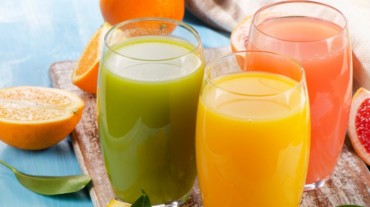
For many of us, fresh juice is a staple in our diets. In our fast-paced and busy lives, having a juice on-the-go is often considered as a health-conscious alternative to sodas, which saves time and supposedly helps in cashing in on nutrients as well.
Fruit juice has been linked to weight loss and detox. After all, juices extracted from fruits and veggies contain highly-concentrated amounts of vitamins, minerals, and other plant nutrients. Hence, adding juice to your day can provide a convenient and refreshing way to get a healthy dose of nutrients that are easily absorbed.
However, as per the research by University of Toronto’s Department of Nutritional Sciences, when we juice fruits and vegetables, some of the healthy fibre is lost as juice extractors separate the juice from the fiber-rich pulp and skins.
That loss of fibre in fruit and vegetable juices may, in fact, result in spiking our blood sugar relatively more than when we eat the actual fruit or vegetable, causing issues such as diabetes or high cholesterol.
Nutrient loss is inevitable with juicing
Pulp, as it seems, is where the nutrients are concentrated. As it turns out, it is not just fibre that we lose. Polyphenols and antioxidants found in citrus fruits as well as skins of fruits and vegetables may also not be extracted effectively when juicing.

Antioxidants are known to balance inflammation and enzymes that help with digestion. So even if you want some fresh juice, drink it right away as antioxidants and enzyme activity decreases over time.
All in all, bring the pulp back
In order to minimize the loss of fibre, you must retain some of the pulp. You can use a food processor or a blender, instead of a juicer to as this ensures the fiber-rich pulp remains in the juice.
As per a study published by the US National Library of Medicine National Institutes of Health, juices prepared by blending whole fruits have stronger antioxidant activities and contain larger amounts of phenolic compounds than juices that had been prepared by juicing just the flesh of the fruit.
That said, while juicing can help us consume important nutrients, it shouldn’t displace whole fruits and vegetables in our diet.

More importantly, you must be mindful of the fact that while juices contain natural sugars, they are still a concentrated source of calories. So, if you are someone who is watching their blood sugar levels or trying to keep carbohydrates or calories in check, it is critical to watch the portions of juice you are consuming and limit it without failing.
Select Topics of your interest and let us customize your feed.
PERSONALISE NOWPlease remember…
Juicing does have some benefits such as a greater concentration of nutrients per ounce of juice, increased consumption of fruits and vegetables, and enhanced absorption of nutrients. However, it can also make you miss out on important fibre and on other important compounds present in the pulp and membranes of the produce.
With blending, we’re getting all the nutrients that the fruit and vegetables have to offer.